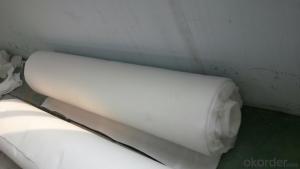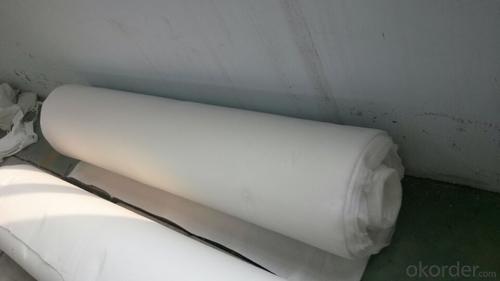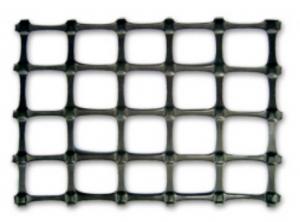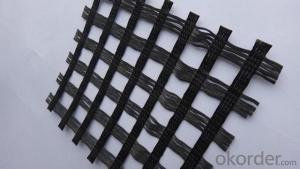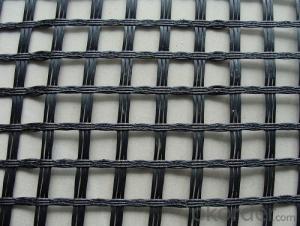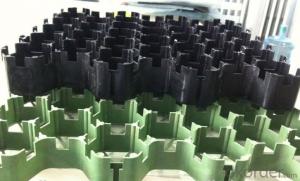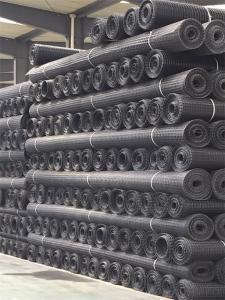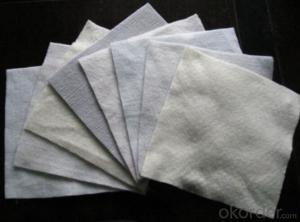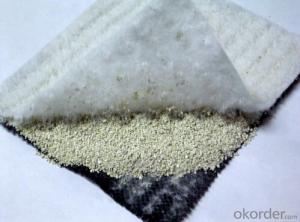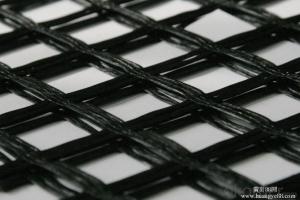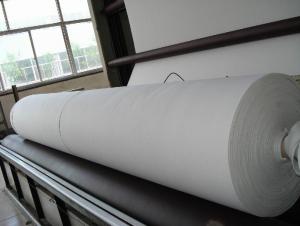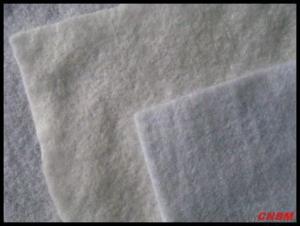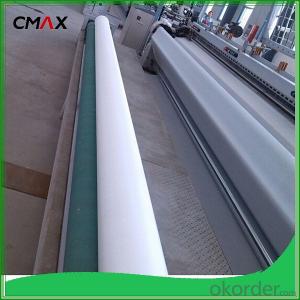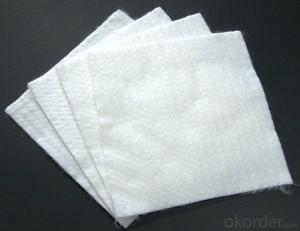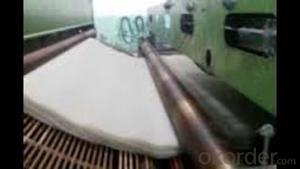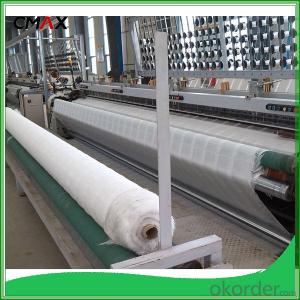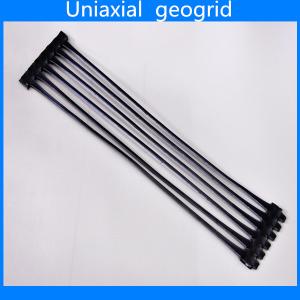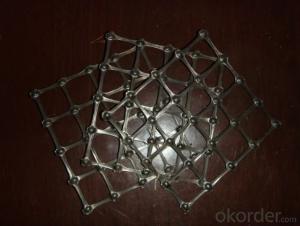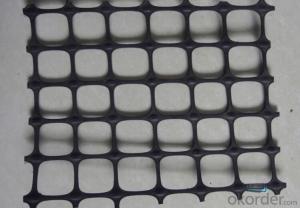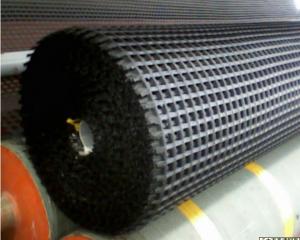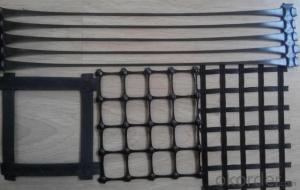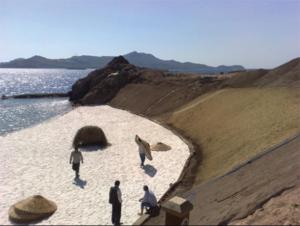Filament Woven Geotextile High Strength Quality Geocells South Africa
- Loading Port:
- Tianjin
- Payment Terms:
- TT OR LC
- Min Order Qty:
- 88 m²
- Supply Capability:
- 1900000 m²/month
OKorder Service Pledge
OKorder Financial Service
You Might Also Like
Introduction of Filament Woven Geotextile:
Good flexibility, permeability, filtration, separation and easy for construction.
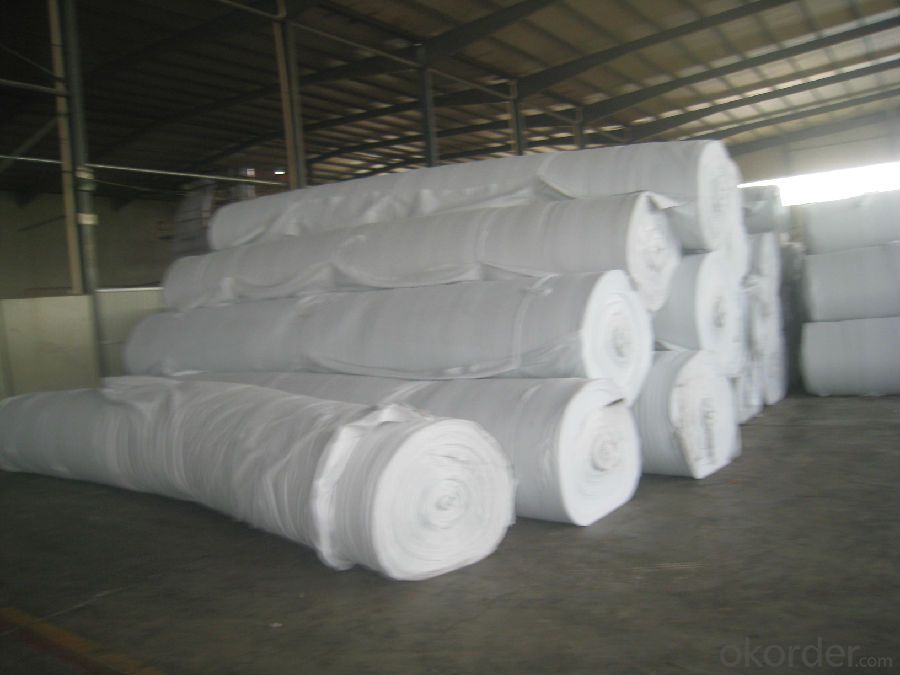
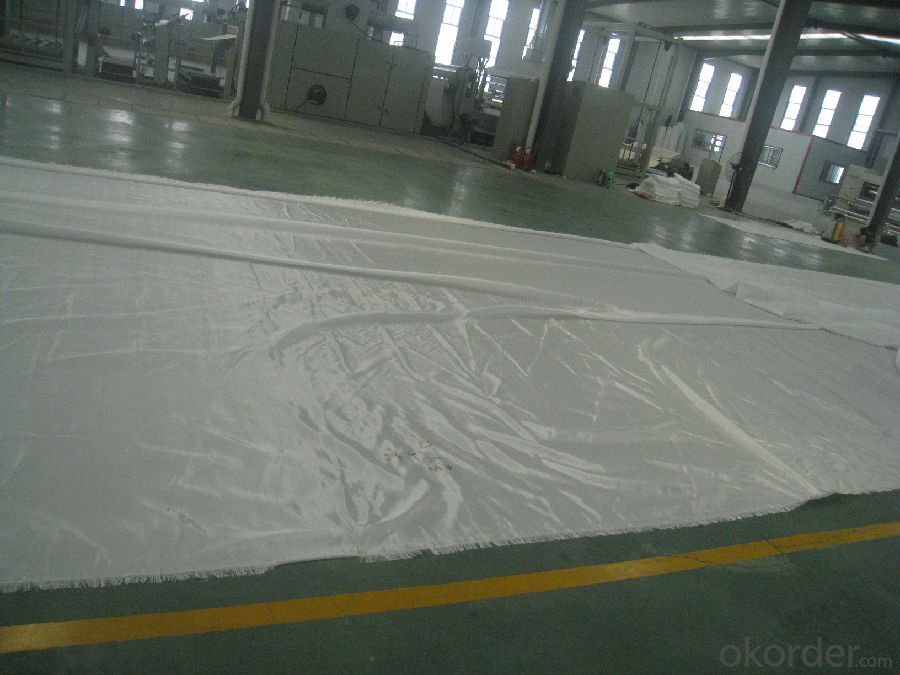
Application of Filament Woven Geotextile:
Geotextile has excellent permeability, acquired, durability, which can be widely used in railway, highway, movement hall, Dams, hydraulic structures, hence hole, coastal shoal, reclamation, environmental protection and other projects. The main products are Synthetic staple fibers needle punched non woven geotextiles and slit and spilt film yarn woven geotextiles.
· Filtration of soils in drainage applications by retaining soil particles while allowing for the free flow of water
· Separation and stabilization in road and railway construction
· Prevention of soil movement in erosion control measures
· Cushioning and protection in many containment projects
Feature:
· 1. Can withstand construction installation stresses
· 2. UV (Ultra Violet) Stabilized
· 3. High Chemical Resistance
· 4. Optimum Elongation
Application of Non-woven Geotextile:
Filtration
It can be the filtration layer of the dykes, river canal, seacoast, concrete slope, retaining walls. At the same time of preventing the clay granule from passing, it allows the water and the gas pass through freely.
Separation
The isolation of the railway dregs and the roadbed, roadbed and the soft base, surface of the airdrome and parking lot and the groundsill, different dam materials. It isolates the soil and the gravel of two kinds different
granule pathway from the groundsill or other buildings.
Reinforcement
The highway, railway, soil-stone dam, breakwater, airport, backfill soil of retaining wall, slope protection, etc in which distributes the earth stress, prevents the side-displacement of the earth body and improves the earthbody stability.
Protection
It prevents the bank from being washed out, protects the bank and the
bottom, prevents the water and soil from being washed away.
FAQ of geosynthetics :
What is geosynthetics ?
Geosynthetics form a perfect erosion control fabric used extremely widely in civil engineering to stabilize and reinforce slopes and soil under or next to roads, railways, dams, water reservoirs etc.. They can be easily applied which minimizes the time of construction, as well as they limit the resources and materials necessary.
What kinds of geosynthetics we have ?
Non-woven geotextile, geogrids, geocells, GCL, Geomembranes, Geonets, Geocomposites etc .
What is the geosynthetics used for ?
Hydraulic
Lagooning and Water Treatment, Ornamental Ponds, Golf Courses
Aquaculture and Desalination,Water Lagoons,Tanks, Reservoirs, Liquid Waste,Floating Cover Solutions, Drainage and Filtration
Environment
Tailing ponds, Leach mining,Landfills,Landfill Capping,Protection against corrosion,Vertical Barriers
Civil Works
Erosion Control,Secondary Containment,Tunnels,Linear and Surface Works,Consolidation of Margins,Soil Reinforcement,Soil Separation.
Building - Parkings,Roofing,Soundproofing
- Q: Can geogrids be used in temporary construction haul roads?
- Yes, geogrids can be used in temporary construction haul roads. Geogrids are commonly used in road construction to improve soil stability and reinforcement. They provide effective load distribution and prevent the lateral movement of soil particles, thereby increasing the load-bearing capacity of the road. In temporary construction haul roads, where heavy equipment and frequent traffic are involved, geogrids can be a useful solution to enhance road performance and durability.
- Q: Can geogrids be used in reinforcement of geosynthetic clay liners?
- Yes, geogrids can be used in the reinforcement of geosynthetic clay liners. Geogrids are commonly used to enhance the tensile strength and stability of geosynthetic clay liners, thereby improving their performance in various applications such as landfill liners, pond liners, and slope stabilization. The geogrids are typically placed between layers of geosynthetic clay liners to provide additional reinforcement and prevent potential failure modes such as lateral sliding and slope instability.
- Q: What are the advantages of using geogrids in soil nailing applications?
- The advantages of using geogrids in soil nailing applications include increased stability and strength of the soil, reduced erosion and soil displacement, improved load distribution, and enhanced resistance against lateral forces. Geogrids act as reinforcements, acting as a tension element to prevent soil movement and improve overall structural integrity. Additionally, geogrids are cost-effective, easy to install, and can be used in a variety of soil conditions, making them a versatile solution for soil nailing applications.
- Q: What is the role of geogrid?
- The geogrid in the highway is mainly used for soft foundation treatment, subgrade reinforcement, slope protection, abutment reinforcement, wing walls, retaining walls, isolation and reinforced soil engineering, highway, railway,.1, abutment approach, wharf, dams, slag field in soft soil foundation reinforcement, retaining wall and road surface crack engineering.2, in areas such as railway use of geogrid can avoid premature Railway on soft ground settlement and damage, 3 generation of geogrid used in embankment, dam, - River, canal, sea levee, reservoir reinforcement and other water conservancy projects 4, geogrid reinforced foundation can greatly improve the airport runway the carrying capacity, ensure aircraft safety 5, geogrid can be used for landfill site processing, power plant, ash dam project, coal mine, metallurgy, greening, fence and other areas 6, building structure of soft foundation reinforcement, improve the whole foundation Bearing capacity
- Q: What is the typical length of a geogrid roll?
- The typical length of a geogrid roll can vary depending on the manufacturer and application, but it is usually around 50 to 100 meters in length.
- Q: How do geogrids help in reducing construction costs?
- Geogrids help in reducing construction costs by providing reinforcement and stabilization to soil, allowing for the use of less expensive and lower quality materials. They also minimize the need for excavation, backfill, and compaction, resulting in reduced labor and equipment costs. Moreover, geogrids enhance the lifespan of structures by preventing soil erosion and settlement issues, reducing the need for costly repairs in the long run.
- Q: Can geogrids be used in reinforcement of embankments over soft soils?
- Yes, geogrids can be used in the reinforcement of embankments over soft soils. Geogrids are commonly used to improve the stability and strength of embankments by providing additional reinforcement and distributing loads more evenly. By placing geogrids within the embankment layers, they can effectively improve the bearing capacity of the soil, prevent excessive settlement, and increase the overall stability of the embankment structure.
- Q: How do geogrids help in slope stabilization?
- Geogrids help in slope stabilization by providing reinforcement to the soil and increasing its strength. They are placed within the soil and act as a tension element, distributing the loads from the slope and preventing soil movement and erosion. This reinforcement helps to stabilize the slope, reduce the risk of landslides, and improve overall slope stability.
- Q: What is the recommended geogrid connection method for specific applications?
- The recommended geogrid connection method for specific applications depends on several factors such as the type of geogrid, soil conditions, and project requirements. Some common geogrid connection methods include using mechanical connectors, overlapping and sewing the geogrid panels, or using adhesive bonding. It is important to consult with a geotechnical engineer or follow the manufacturer's guidelines to determine the most suitable connection method for a specific application.
- Q: Are geogrids suitable for use in contaminated soil conditions?
- Yes, geogrids are suitable for use in contaminated soil conditions. Geogrids are made from durable and chemically resistant materials, which allows them to withstand the harsh conditions of contaminated soil. Additionally, their high tensile strength and stability make them effective in reinforcing and stabilizing the soil, even in contaminated areas.
Send your message to us
Filament Woven Geotextile High Strength Quality Geocells South Africa
- Loading Port:
- Tianjin
- Payment Terms:
- TT OR LC
- Min Order Qty:
- 88 m²
- Supply Capability:
- 1900000 m²/month
OKorder Service Pledge
OKorder Financial Service
Similar products
Hot products
Hot Searches
Related keywords
